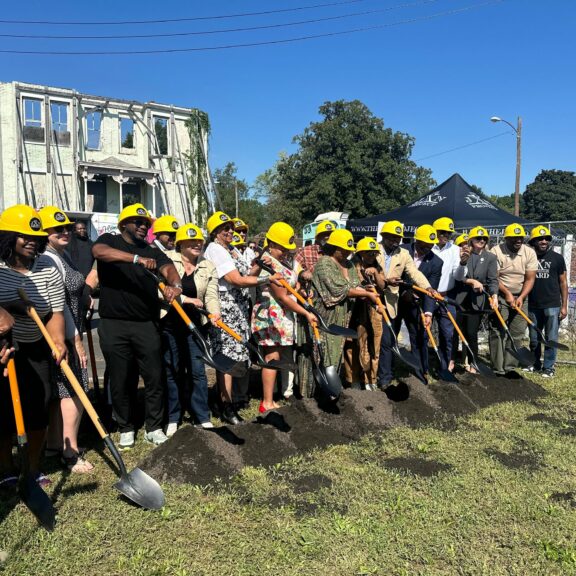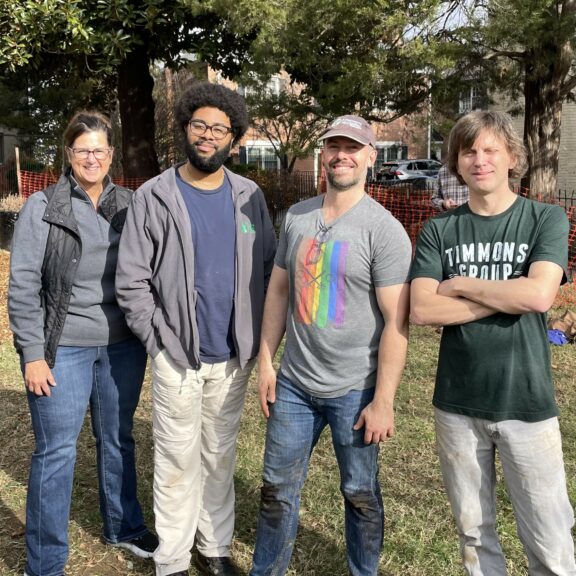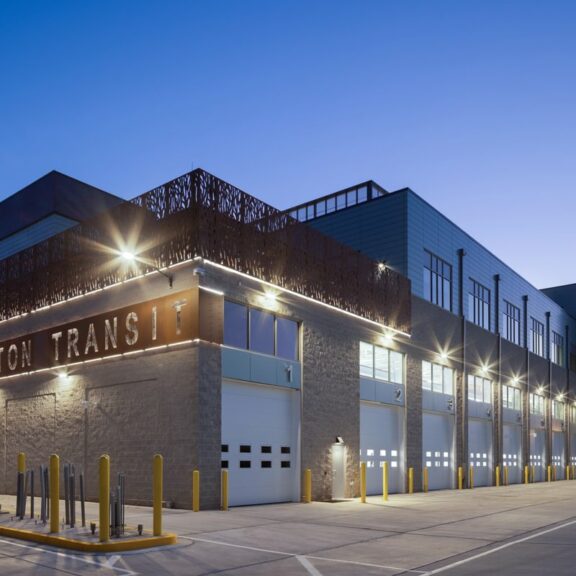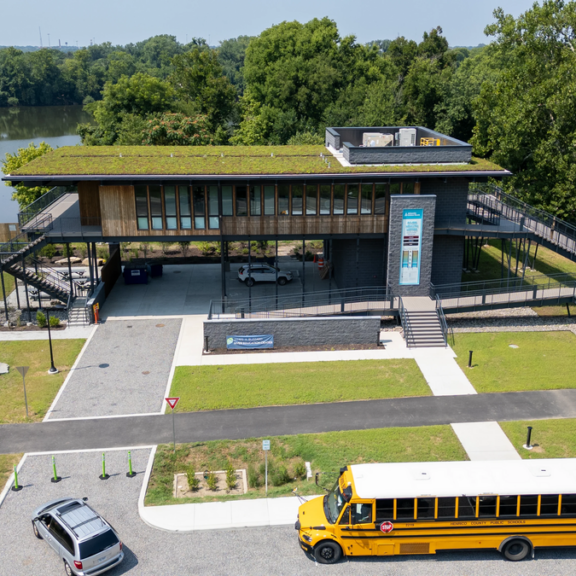Richmond, Virginia’s historic Byrd Park Pump House, a beloved landmark in the city and an engineering masterpiece, has sat vacant and largely unused for over seven decades. While the grounds are currently open as a public park, a lack of investment in the facility and connectivity to the site make this intriguing place challenging to access. Long admired for its character, a recent groundswell of interest from community stakeholders—combined with the desire of the City’s Parks Department to make the site a destination—have fueled a promising effort to at last renovate the building and transform the underutilized park into a thriving public facility and event venue that can serve all of Richmond.

What draws people to the Pump House?
Centrally located in the City yet seemingly isolated, wild, and mysterious, the Pump House Park is a case in contrasting character that defines its charm and appeal. The beauty of the architecture and environment and a powerful sense of history beckon visitors. The castle-like Gothic Revival building is perched on an “island” between two canals, surrounded by water that courses by and through the building’s infrastructure itself. Encompassing this heavily sculpted landscape of canals, railroad, and waterworks are adjacent parklands and the James River, making its appearance all the more dramatic and iconic.
What is the current state and use of the facility?
At one time in the late 19th and early 20th centuries, the Pump House’s state-of-the-art operations powered the City’s public drinking water infrastructure. With technological advancements, the facility fell into disuse. A second-floor open air social pavilion that once hosted dances—one of a kind for a public works facility—was also long ago abandoned. While the facility was opened as a public park in the 1990s, the building is not fit for occupancy at this time and trail and signage improvements are needed to make the site accessible and user friendly. The Parks Department and the Friends of Pump House host occasional tours and events, so there are opportunities to get a look inside of the building.

What is proposed?
Renovations will increase accessibility to both the site and building, reinvigorate a portion of the James River Park System, create educational opportunities, provide additional office space for the City of Richmond’s Park and Recreation staff, and allow for event rentals and other programmatic uses to occur within the building. Dedicated on-street parking, accessible routes throughout the park, activation of the canals surrounding the Pump House, and improved recreational access will enable a diverse population of visitors to experience this hidden gem. The design for a renovated Pump House Park marries a distinct sense of place with the intervention needed to ensure greater public access to the grounds and building.

What is next for the project?
The City of Richmond and several stakeholder groups came together to establish goals for the project. To meet these goals, Timmons Group’s landscape architecture team collaborated closely with 3north, a Richmond-based firm, to create a master plan for the building and grounds that reflects a holistic vision for the future of the park. This plan, which has been paired with a cost estimate, can be used by the City to strategize and raise the funds needed to implement the project, which may entail phasing in the renovation and improvements over time. Several review and permitting processes at the local, state, and federal levels will be required to advance the schematic level design forward into the construction documentation that will be used to further develop and finalize the designs. The City is currently planning a path towards future implementation.





